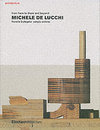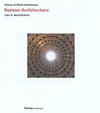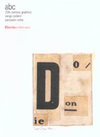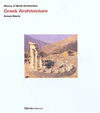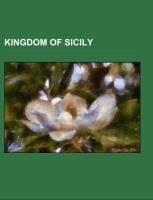
-
 Anglický jazyk
Anglický jazyk
Kingdom of Sicily
Autor: Source: Wikipedia
Source: Wikipedia. Pages: 100. Chapters: Battles involving the Kingdom of Sicily, Kings of Sicily, Philip II of Spain, Charles V, Holy Roman Emperor, Frederick II, Holy Roman Emperor, List of monarchs of Sicily, Philip V of Spain, Roger II of Sicily, Charles... Viac o knihe
Na objednávku, dodanie 2-4 týždne
24.84 €
bežná cena: 27.60 €
O knihe
Source: Wikipedia. Pages: 100. Chapters: Battles involving the Kingdom of Sicily, Kings of Sicily, Philip II of Spain, Charles V, Holy Roman Emperor, Frederick II, Holy Roman Emperor, List of monarchs of Sicily, Philip V of Spain, Roger II of Sicily, Charles I of Naples, Philip III of Spain, Peter III of Aragon, Philip IV of Spain, Victor Amadeus II of Sardinia, Alfonso V of Aragon, Charles VI, Holy Roman Emperor, Charles III of Spain, Charles II of Spain, John II of Aragon, Conradin, William I of Sicily, Roger I of Sicily, Cocalus, Tancred, King of Sicily, William II of Sicily, Frederick III of Sicily, Ferdinand I of the Two Sicilies, James II of Aragon, Manfred, King of Sicily, Alfonso II of Naples, Martin of Aragon, Conrad IV of Germany, Ferdinand I of Aragon, Joan II of Naples, Maria, Queen of Sicily, Martin I of Sicily, Battle of Nocera, Peter II of Sicily, William III of Sicily, Frederick III the Simple, Battle of Falconaria, Battle of Rignano, Battle of Sanluri, Louis, King of Sicily, Simon of Sicily, Roger III of Sicily. Excerpt: Charles III (Spanish: Carlos III; Italian: Carlo III; 20 January 1716 - 14 December 1788) was the King of Spain and the Spanish Indies from 1759 to 1788. He was the eldest son of Philip V of Spain and his second wife, the Princess Elisabeth Farnese. In 1731, the fifteen-year-old Charles became the Duke of Parma and Piacenza, as Charles I, at the death of his childless great uncle Antonio Farnese, Duke of Parma. In 1734, as the Duke of Parma, he conquered the kingdoms of Naples and of Sicily, and was crowned as the King of Naples and Sicily on 3 July 1735, reigning as King Charles, although he is contemporarily known as Charles VII of Naples and Charles V of Sicily. In 1738 he married the Princess Maria Amalia of Saxony, an educated, cultured woman who gave birth to thirteen children, eight of whom reached adulthood. Charles and Maria Amalia resided in Naples for nineteen years; she died in 1760. Upon succeeding to the Spanish throne on 10 August 1759, Charles, a proponent of enlightened absolutism, on 6 October 1759 abdicated the Neapolitan and Sicilian thrones in favour of Ferdinand, his third surviving son, who became Ferdinand I of the Two Sicilies, or Ferdinand IV of Naples and III of Sicily. Charles III's descendants ruled the Kingdom of the Two Sicilies until 1861. As king of Spain Charles III tried to rescue his empire from decay through far-reaching reforms such as weakening the Church and its monasteries, promoting science and university research, facilitating trade and commerce, modernizing agriculture and avoiding wars. He never achieved satisfactory control over finances, and he had to borrow more and more. His reforms proved short-lived and Spain relapsed after his death. In 1713, the Treaty of Utrecht concluded the War of the Spanish Succession (1701-14), thereby reducing the political and military power of Spain, which had been ruled by the House of Bourbon since 1700. Under the terms of the treaty, the Spanish Empire retained its Latin American terri
- Vydavateľstvo: Books LLC, Reference Series
- Rok vydania: 2020
- Formát: Paperback
- Rozmer: 246 x 189 mm
- Jazyk: Anglický jazyk
- ISBN: 9781234575359




